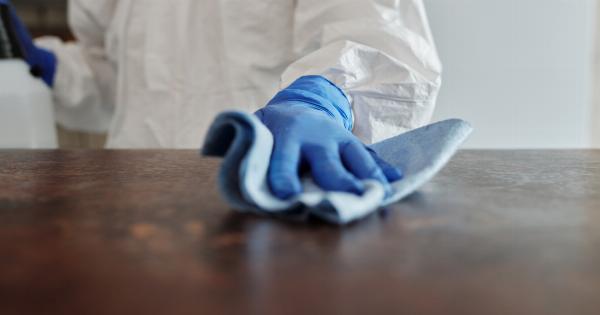Bladder cancer is a serious condition that can affect both men and women, but there are certain risk factors that are specific to females.
Understanding these risks can help women to take preventive measures and seek early detection and treatment if necessary. In this article, we will explore some of the key risk factors for bladder cancer in women and discuss ways to reduce the risk.
What is bladder cancer?
Bladder cancer is the abnormal growth of cells in the lining of the bladder, which is a hollow organ in the lower abdomen responsible for storing urine.
The most common type of bladder cancer is called urothelial carcinoma, which begins in the cells lining the bladder.
Risk factors for bladder cancer in women
While anyone can develop bladder cancer, there are certain factors that can increase a woman’s risk. These include:.
1. Smoking
Smoking is a significant risk factor for bladder cancer in both men and women. Chemicals in tobacco smoke enter the bloodstream and are filtered by the kidneys, ultimately being concentrated in the urine.
This exposes the bladder to harmful substances, increasing the risk of cancerous cell growth.
2. Exposure to certain chemicals
Women who work in industries involving exposure to certain chemicals, such as dyes, rubber, textile, and paint, may have an increased risk of bladder cancer.
These chemicals can enter the body through inhalation, ingestion, or skin contact, and can eventually reach the bladder, increasing the likelihood of cancer development.
3. Chronic urinary tract infections
Recurrent or chronic urinary tract infections (UTIs) can also be a risk factor for bladder cancer in women. Frequent UTIs may result in chronic inflammation of the bladder lining, which can increase the chances of malignant cell growth over time.
4. Radiation therapy
Women who have undergone radiation therapy in the pelvic area for previous cancers, such as cervical or colorectal cancer, may be at higher risk for developing bladder cancer.
The radiation therapy can damage healthy cells and tissues, potentially leading to the development of cancerous cells in the bladder.
5. Certain medications
Some medications that are commonly prescribed for other medical conditions, such as cyclophosphamide (a chemotherapy drug) and pioglitazone (used to treat diabetes), have been associated with an increased risk of bladder cancer in women.
It is important to discuss the potential risks and benefits of these medications with a healthcare provider.
6. Family history
Having a family history of bladder cancer can increase a woman’s risk of developing the disease.
If a close relative, such as a parent or sibling, has had bladder cancer, it is essential to inform healthcare providers and monitor for any signs or symptoms.
7. Age
Advanced age is a well-known risk factor for bladder cancer in both men and women. The chances of developing bladder cancer increase with age, with the highest incidence rates found in individuals over the age of 55.
Reducing the risk of bladder cancer
While some risk factors, such as age and family history, cannot be changed, there are steps women can take to reduce their overall risk of bladder cancer:.
1. Quit smoking
Stopping smoking is one of the most effective ways to reduce the risk of bladder cancer. It is essential to seek support from healthcare professionals and explore options for smoking cessation therapies if needed.
2. Follow safety precautions at work
If working in an industry that involves exposure to chemicals, following safety precautions such as wearing protective clothing and equipment can help minimize the risk of bladder cancer.
It is important to be aware of the specific hazards in the workplace and to take appropriate measures to protect oneself.
3. Maintain good urinary hygiene
To reduce the risk of chronic urinary tract infections, practicing good urinary hygiene is crucial. This includes wiping from front to back after using the toilet, emptying the bladder completely, and staying hydrated to flush out bacteria.
4. Discuss medication risks
For women taking medications associated with an increased risk of bladder cancer, it is essential to have an open and honest conversation with a healthcare provider.
They can discuss the potential benefits and risks of the medication and suggest alternative options if necessary.
5. Stay vigilant with check-ups
Regular check-ups with healthcare providers are crucial for early detection and treatment of bladder cancer. Routine urine tests, imaging studies, and cystoscopy (a procedure to visualize the bladder) may be recommended for individuals at higher risk.
Conclusion
Bladder cancer is a significant concern for women, and understanding the risk factors is key to prevention and early detection.
By taking steps to reduce risk, such as quitting smoking, practicing good urinary hygiene, and discussing potential medication risks, women can empower themselves in the fight against bladder cancer. Regular check-ups and maintaining open communication with healthcare providers are vital for maintaining urinary health and overall well-being.




























